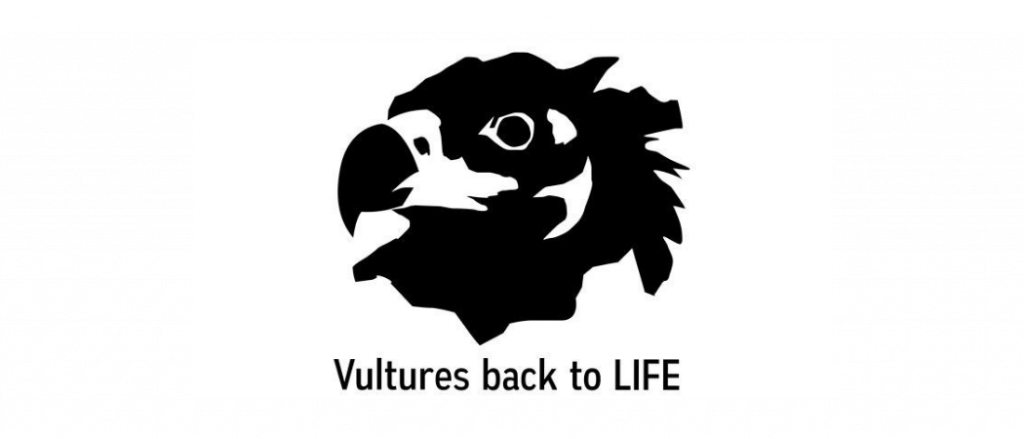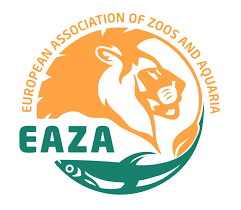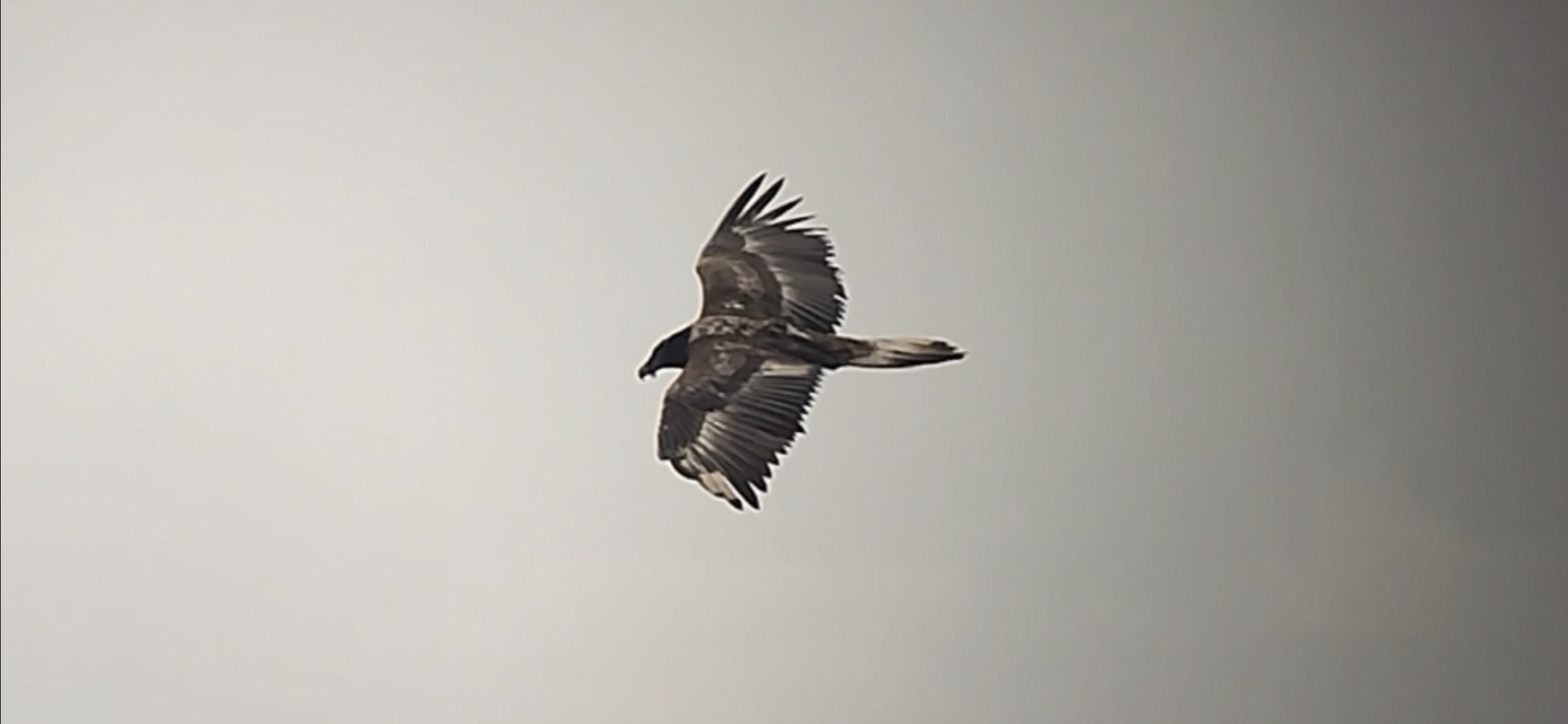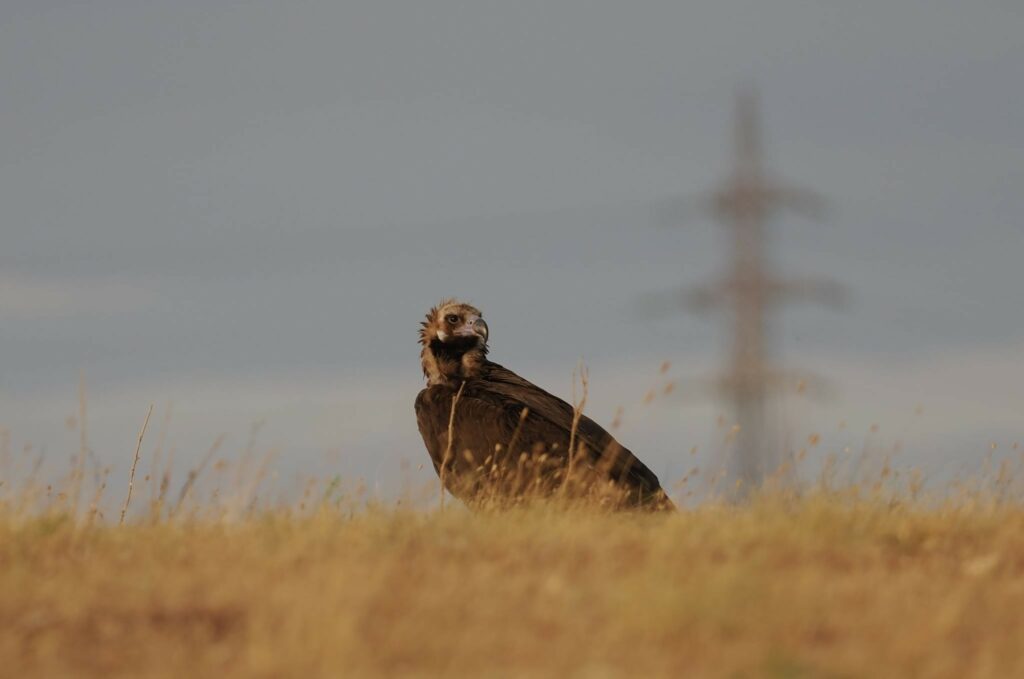The captive-bred and reintroduced Cinereous Vulture Riga has settled down in Greece! It seems that Riga, released near Kotel, Bulgaria, in 2018, found a partner and nested in the Dadia-Lefkimi-Soufli Forest National Park.
Reintroducing Riga to Bulgaria
Riga is one of the seven Cinereous Vultures released by the hacking method in Bulgaria. The Vultures Back to LIFE project team releases captive-bred vultures at an artificial nest on a tree built for the species near Kotel, allowing young nestlings to acclimatize to their new environment until they are ready to take their first flight. Riga comes from the Cinereous Vulture Captive Breeding Network (EEP) and was donated to the project in 2018 by Riga Zoo based in Latvia. In May, she will turn four years old.
Thanks to the GPS transmitter she carries on her back, Riga sends us regular signals about her location, and the project team has been tracking her for years.
The vast wanderings of Cinereous Vulture Riga


After she fledged in Kotel in the summer of 2018, the young Cinereous Vulture went her own way and embarked on vast travels. In October 2018, Riga headed to North Macedonia, where she was detected by her GPS transmitter near Veles and along the Vardar River. A few days later, she continued to move south and was already in Greece, 30 km from the North Macedonian border. Moving to Athens, she reached the Peloponnese peninsula. Quickly adapting to local conditions, she wintered in the Mesolonghi area with other local vultures.
In the spring of 2019, Riga headed north from southern Greece, travelling 257 km in one day and crossing Albania. The bird spent one night in Kosovo before heading back. The vulture was observed in the Uvac Nature Reserve in Serbia, along with Griffon Vultures in the region. On 24 April, Riga returned to Bulgaria, where she stayed for a short time. The young bird spent the summer of 2019 in the Alps, mainly in Austria, where she stayed for three and a half months. From there, the wandering vulture headed south searching for a warmer place to spend the winter. The bird crossed Slovenia and Croatia and stayed for a short time in Bosnia and Herzegovina.
After 19 months of wandering, in April 2020, Riga was spotted again in Bulgaria – in her native place in Kotel Mountain. There was a possibility that Riga found a potential partner, as she was observed spending some time with another young Cinereous Vulture in the Mesolonghi area. Unfortunately, our hopes for Riga to nest in the Stara Planina region did not come true, and at the beginning of the summer, the bird flew north to Romania again but quickly returned to the south. After stopping in the vulture adaptation aviary in Vratsa Balkan, she passed through North Macedonia, Croatia and Slovenia. At the end of May, she arrived again in Hohe Tauern National Park, Austria, where for the second year in a row, she welcomed the summer of 2020.
Riga settles down and nests in Greece
Riga’s recent behaviour and movements brought hope to the entire project team. Her GPS data, interpreted by the project partners at Fund for Wild Flora and Fauna, indicated breeding behaviour. They soon informed our colleague Sylvia Zackkak from Dadia-Lefkimi-Soufli Forest National Park, who was so kind as to confirm the nesting in the field.
So, after four years, Riga found a partner and chose to nest in Dadia Forest in the Eastern Rhodopes. This place is not accidental – it is home to the only remaining indigenous colony of wild Cinereous Vultures in the Balkans.
We are keeping our fingers crossed that Riga will create a new generation, helping boost the population of the species in the Balkans.
The Vultures Back to LIFE project

Led by Green Balkans in collaboration with the Fund for Wild Flora and Fauna, Vulture Conservation Foundation, Junta de Extremadura and Euronatur, the Vultures Back to LIFE project aims to reintroduce the Cinereous or Eurasian Black Vulture to Bulgaria. The team will transfer and release into the wild around 60 birds, some coming from captive-breeding backgrounds but mostly from Spanish wildlife rehabilitation centres. The project will also create supplementary feeding stations, increase populations of wild herbivores, improve nesting conditions and tackle some of the major threats to support the return of the species.




Source: Green Balkans



